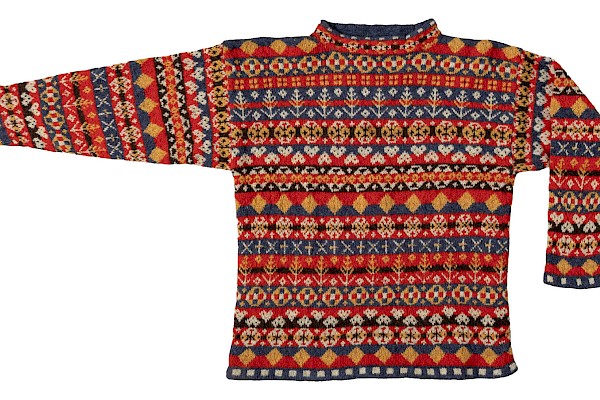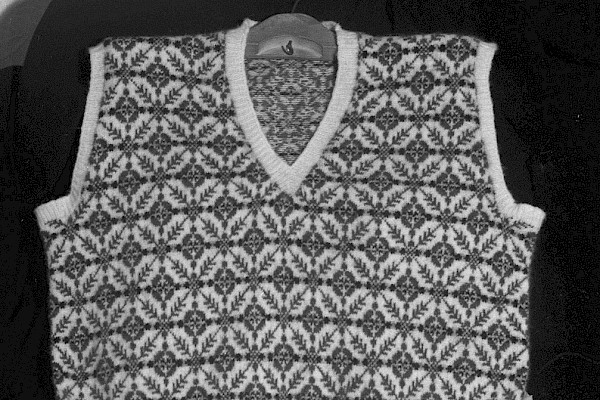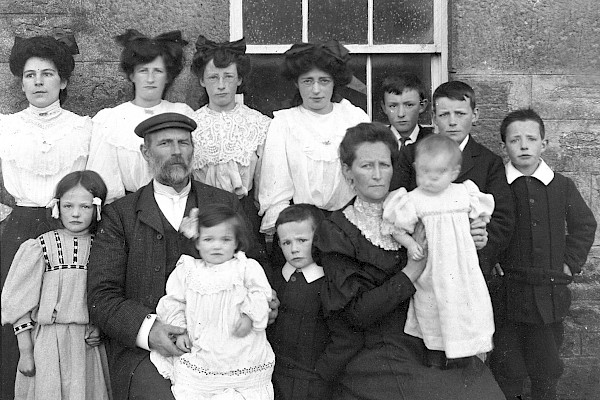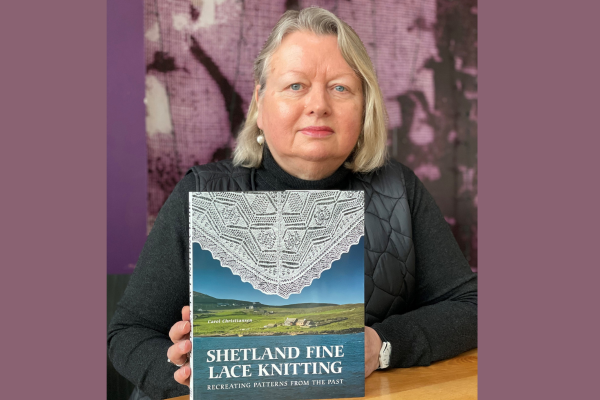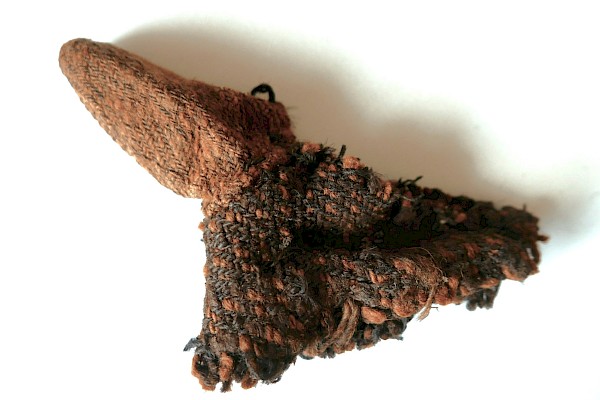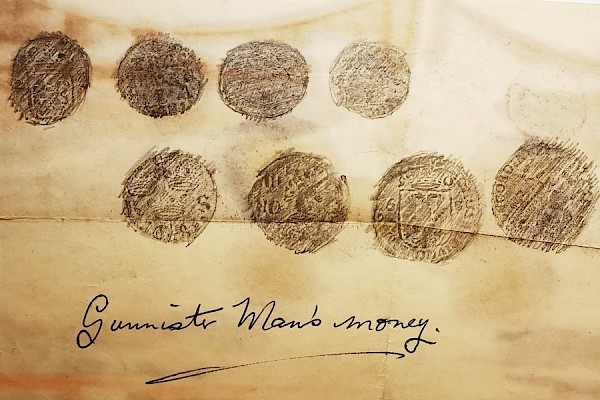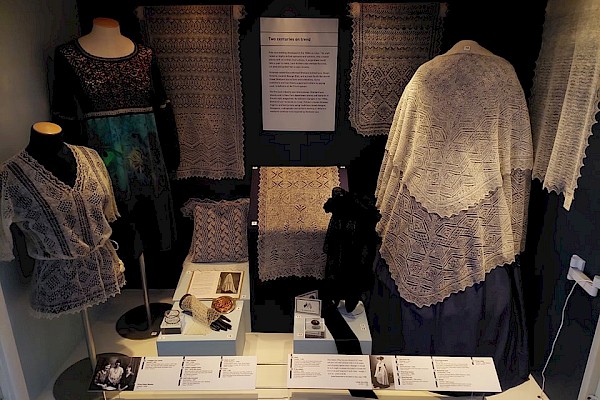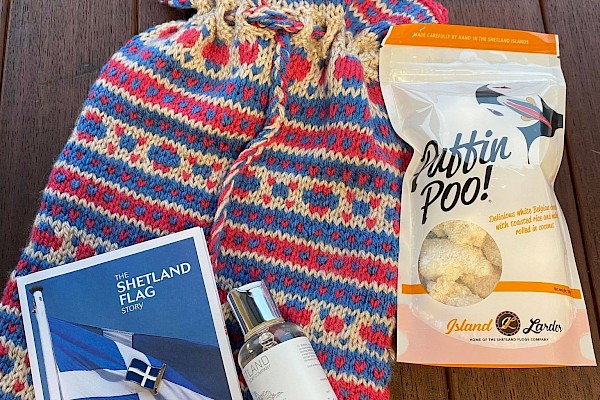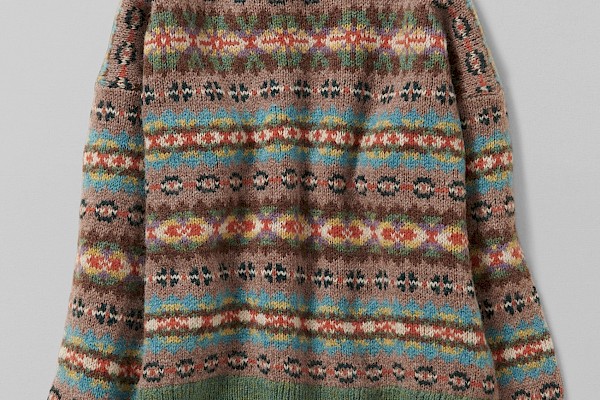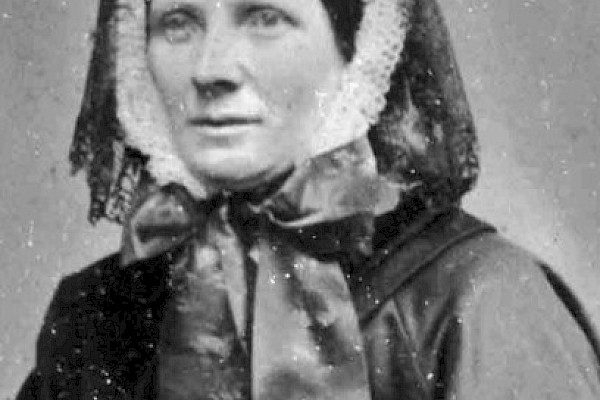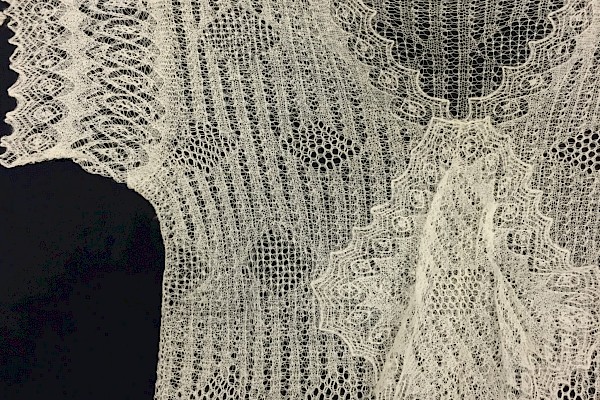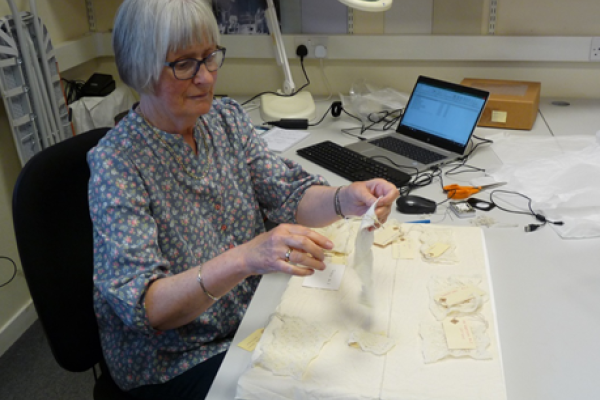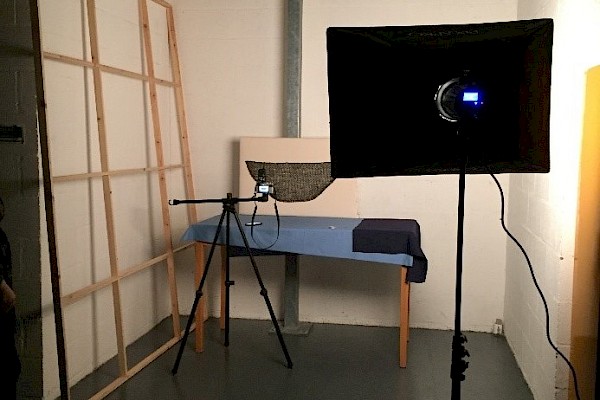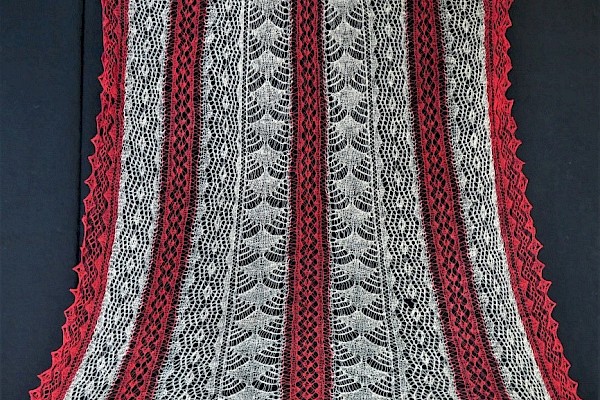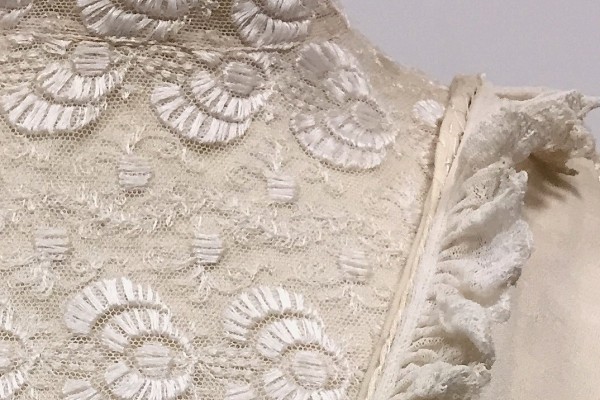Oh So Fine and Simple : the Crepe Shawls
Lace shawls with the largest number of complex designs get the most admiration, but there is another class of Shetland lace that is equally remarkable. These are the so-called crepe shawls, incredibly finely constructed in the simplest patterns. As we work our way through the collection and unroll shawls from decades of storage, we have been awed by them. These otherwise plain shawls are best at showing what remarkable gauges some knitters were working at. The consistency of wool preparation and spin to produce the most even, fine yarns are also plain to see.

Border and lace edge of crepe shawl TEX 2019.32. It was begun at one end of the centre, working down one quarter of the auld shell border, then picking up and knitting the three remaining border sections separately, with about 230 rows in each.
The design of a crepe shawl is simple. It has a garter stitch (‘riggies’) centre surrounded by a simple lace edge of varying design. Most crepe shawls have a border of auld shell pattern. They are made using the same patterns as plain shawls or haps, those thick, all-purpose wraps worn from cradle to grave by women and girls in 19th century Scotland. What distinguishes crepe shawls is their extreme fineness, elevating them to fine lace status.
The word ‘crepe’ describes the look and feel of the riggies centre. It originates from the French masculine noun crêpe, a fabric with an undulating surface due to the use of a high-twist yarn. It comes from the early French cresp, from the Latin crispus, meaning curly or wrinkled.
The yarns in our crepe shawls don’t look particularly curly, but the higher-than-average twist does impart a sturdy, three-dimensionality to the fine garter stitch. In the openwork border the crepiness is somehow reduced. The best examples have a balanced look, where the size of stitches is in proportion to the spacing of the row ridges. These shawls have a lovely drape, perfect for throwing over shoulders.
Shetland lace is knitted back, either as plain knit or in pattern. This method makes knitting faster but is offset by the increased number of rows required. As with any garter stitch fabric, the crepe shawls have a row gauge about double that of the stitch gauge. For example, TEX 2019.32 has a gauge of 45 stitches and 76 rows over 10cm. The centre measures 82cm wide x 94cm long, which means it has about 700 rows of about 370 stitches each. That equates to an astronomical 258,300 stitches worked for the centre alone. Unfortunately, we do not know the name of the knitter of this beautiful shawl but she knitted for A. I. Tulloch’s firm in the mid-20th century. They also donated a long, crepe stole of the same quality, possibly made by the same knitter.

TEX 2019.32 in its entirety, made from extremely fine 2-ply hand-spun yarn, in a gauge of 45 stitches and 76 rows over 10cm (4 inches)
Tracey and I have been photographing the shawls from a height, in order to capture them in their entirety. It is the first full view of many of these shawls since they were last dressed 50 to 150 years ago. This crepe shawl shows variations in evenness of the fabric, appearing as different shades of white against the dark background. This is due to the slight change in thickness of the yarn prepared and spun by the spinner, rather than a change in gauge by the knitter. Shetlanders had words in their Old Norse dialect for unwanted stripes in fabric due to poor mixing of wool, but these quality-control terms pre-date lace knitting and refer to coloured stripes in stockings and woven fabric rather than problems with yarn thickness in the finest of lace.
Examining the shawl close-up, it is difficult to notice these variations. But the shawl may have come to our collection because it was considered inferior. It still has a manufacturer’s label attached, which means it was made for sale but never sold. In this case the knitter was probably compensated because we received the shawl as unsold stock from the company. But rejection on the grounds of quality was the harsh reality for many knitters, even those completing painstakingly fine lace. In this case the knitter could not know until knitting was well underway that the hand-spun yarn she was supplied would be a few fibres thicker in some places than others. The stripes would only become obvious when knitting was completed and the shawl was dressed and finished. It is unlikely such flaws would have been visible when worn.

TEX 2004.366, crepe shawl with a diagonal centre and fancy lace edge. It is knit in industrially-manufactured cobweb wool and probably dates to the mid-20th century. Note how again, the border is knit out from the centre.
A variation of crepe shawl design is with a centre knitted from corner to opposite corner. Patterns have been written for this design (Miller 2002, p.254-8). We have several in our collection from Patons & Baldwins (numbers 918 and 1085), probably published in the late 1940s or early 1950s. In this period the design often was used for baby shawls and knitted in much thicker yarn, certainly not in fine hand-spun wool. But Pattern 1085 claims ‘This Shetland design has been in the P & B range for well over sixty years’. Indeed, in the late 19th and early 20th centuries, crepe shawls of any type were in demand (Chapman 2015, p.210). They are a strikingly simple garment that reflects the perseverance of the most committed knitter who can maintain an even gauge.
References
Chapman, R. 2015. The History of the Fine Lace Knitting Industry in Nineteenth and Early Twentieth Century Shetland. University of Glasgow PhD thesis. http://theses.gla.ac.uk/6763/1/2015ChapmanPhD.pdf
Miller, S. 2002. Heirloom Knitting. Lerwick: Shetland Times Ltd.
